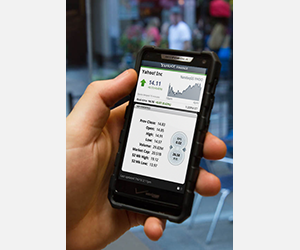Adding Live Chat Software - Adaptive and Responsive Choices in UK’s 2014 Mobile Market

Since the emergence of the mobile web and subsequent proliferation of smartphones, the UK is deeply divided in whether to adopt a responsive or adaptive web design solution. This has now become something of an on-going debate as more and more of our belongings join the ‘internet of things’ (central heating, refrigerators, and cars are just some items that now sport web-enabled screens). As UK’s foremost expert in live chat software we thought it a good idea to cover the basic information you need to be aware of when you add live chat to your mobile website.
According to the 2013 Communications Market Report by Ofcom, half of all UK adults now access the internet on their mobile phone – that’s a significant figure. UK companies that experience a large proportion of mobile traffic would therefore be well advised to investigate mobile-suitable design, navigation, content and add-ons. At Click4Assistance we consider a number of factors when we add live chat software for mobile visitors, including whether to produce a responsive or adaptive design.
Responsive
The responsive web design concept may have existed for some time, but it was not until a comprehensive introduction by Ethan Marcotte that the concept gained widespread recognition and popularity. By definition, a responsive web design should respond to fit any screen or device size. At Click4Assistance we can incorporate CSS3, media queries, the @media rule, and fluid grids that use percentages to create a flexible foundation for a mobile chat solution. Flexible images allow the live chat window design to adapt its layout to the viewing device, user and/or environment at the expensive of load time. For the UK, with its large variety of devices and good connectivity, this is quite a popular solution.
Adaptive
A book entitled Adaptive Web Design by Aaron Gustafson first put this alternative approach to web design into print. The main difference is that Gustafson advocates focusing on the user and not the browser. In a nutshell; adaptive design will change to fit a predetermined set of screen and device sizes. The adaptive model has a lot in common with progressive enhancement (another web design strategy) and also builds on three layers: content (HTML mark-up), presentation (CSS and styling) and client-side scripting layer (JavaScript/jQuery behaviours). This method has become less common, but businesses in the UK are getting smarter at understanding when an adaptive design is preferable to a responsive.
Methodology of Choice
Truthfully, users who access your website through their mobile device (or any display screen for that matter) are indifferent to the web design method – so long as they can effectively navigate on whatever device they are using, visitors are happy. Bear this in mind when you add live chat software for mobile visitors: Responsive and adaptive are on an equal playing field. It can be more important to have a strong implementation of a design than finding the right design. That being said, there are situations where one method may outperform the other. Let’s explore the differences in broader terms and how they can affect your mobile chat solution.
On a theoretical level, a responsive layout is always better than an adaptive layout. This is because it is the closest to a technologically-agnostic solution, i.e. visitors can use the mobile chat window regardless of device, resolution or browser. This does not however mean that it is the most pragmatic solution.
The advantage of an adaptive layout is that you only have a small collection of states to consider whereas a responsive layout needs to cater for hundreds of states. Differences across similar devices might be negligible, but they still exist. This makes it impossible to know how your live chat window will look to every single visitor. Even though you can’t accurately predict the behaviour of a responsive layout, you can at least rest assured that the fundamental features and structure of your chat design will be usable across all formats.
By comparison, an adaptive layout is a more pragmatic solution that is cheaper to implement and easier to test. This makes it a good option if resources are tight. Adaptive is also better at controlling line length and avoiding orphaned header text than a responsive approach.
How can you make a decision on whether to use an adaptive or responsive design if the existing state of your website, or amount of resources at your disposal, doesn’t steer you towards either? The answer is quite simple and hopefully you’ve been waiting for it to be mentioned – Your website’s smartphone and tablet visitors. When you add live chat for mobile visitors it’s important to actually study your mobile traffic. At Click4Assistance we have studied incoming mobile traffic to UK sites and come up with a responsive mobile chat solution that fits the bill. We are continually testing this design and have yet to discover a mobile device that breaks our solution. If you want to add live chat for mobile visitors then start by contacting our team on: theteam@click4assistance.co.uk.
























